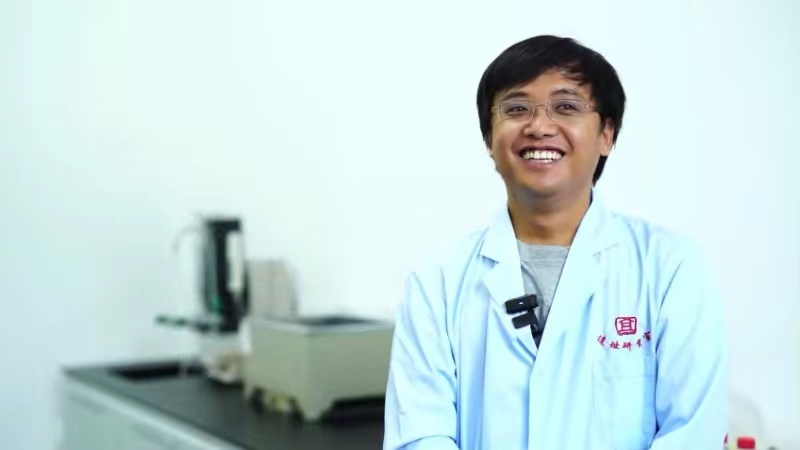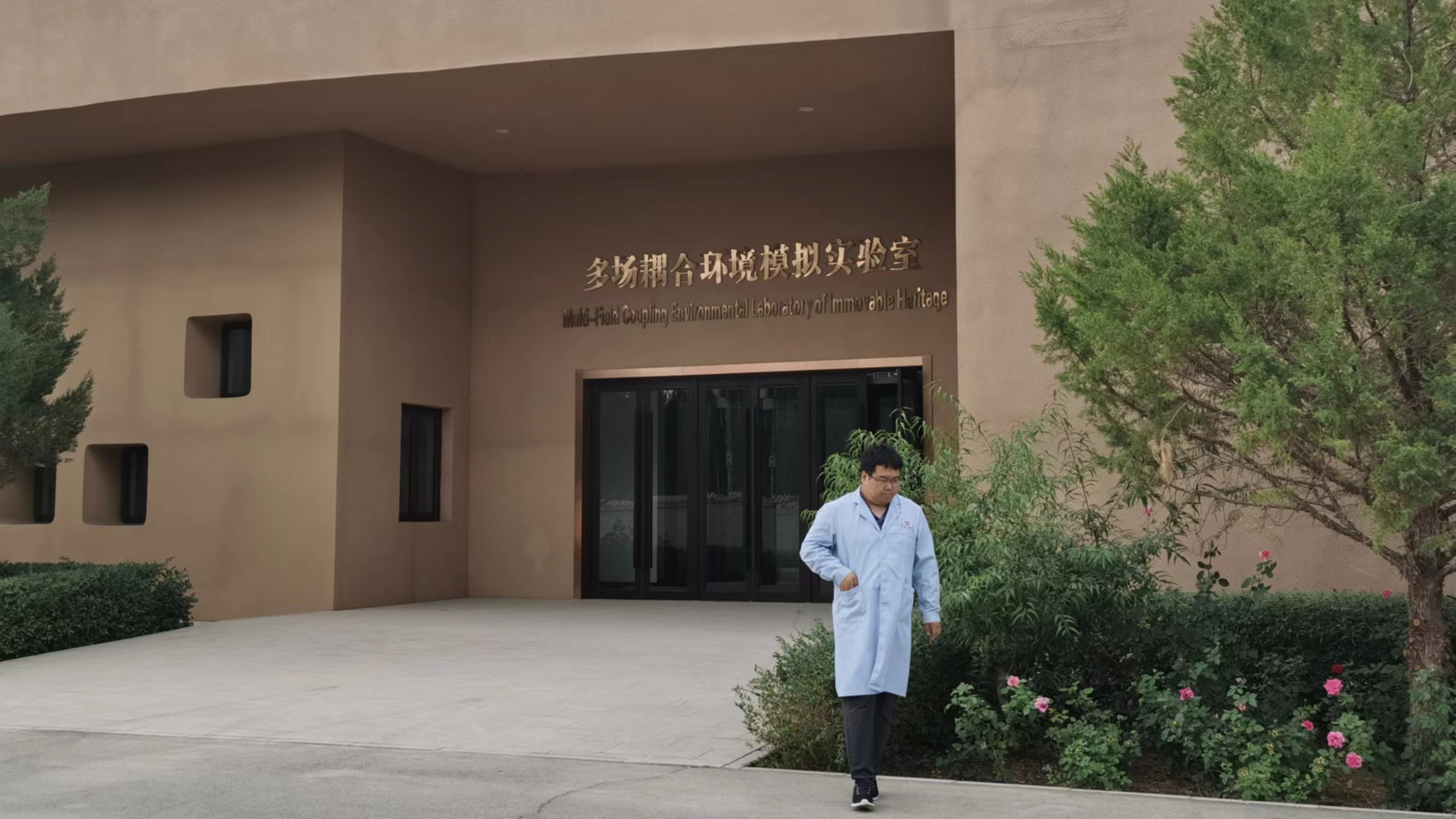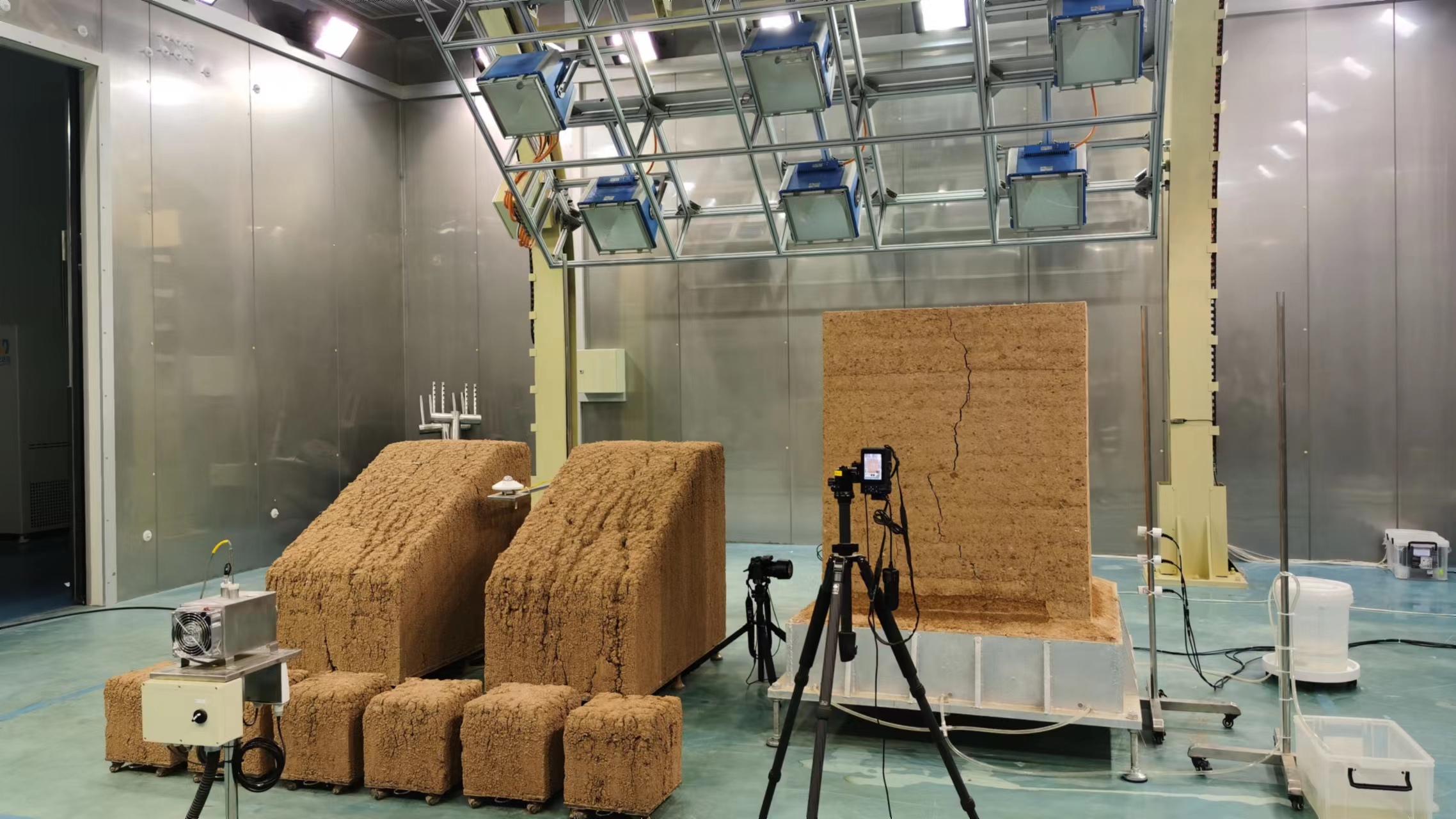
Wang Yanwu, 32, director of the Site Research Office of the Conservation Institute at the Dunhuang Academy, smiles during an interview with CGTN, September 5, 2023. /CGTN
Wang Yanwu, 32, director of the Site Research Office of the Conservation Institute at the Dunhuang Academy, smiles during an interview with CGTN, September 5, 2023. /CGTN
"Cultural heritage protection requires knowledge of multiple disciplines and close teamwork," said Wang Yanwu, director of the Site Research Office of the Conservation Institute at the Dunhuang Academy.
The academy is best known for its research into and preservation of the Mogao Caves, an area with the most abundant Buddhist art in the world. Located in the Gobi Desert in Dunhuang, northwest China's Gansu Province, it is known as an art museum in the desert.
Listed as a UNESCO World Heritage Site, the Mogao Caves represent a symbol of cultural exchanges at a key stop along the ancient Silk Road that spanned a millennium.
At the end of 2020, the academy got a new tool to study how the natural environment affects the caves. Known as a multi-field coupling laboratory, it is able to simulate various environments that the earthen relics could experience in nature by controlling parameters such as precipitation, wind and sun exposure.

A researcher walks out of the multi-field coupling laboratory at the Dunhuang Academy, September 5, 2023. /CGTN
A researcher walks out of the multi-field coupling laboratory at the Dunhuang Academy, September 5, 2023. /CGTN
By observing how and why earthen sample blocks crack or erode in the lab, researchers aim to find out how to prevent damage from occurring in caves.
In recent years, Wang's focus has been on moisture – an element that poses significant challenges for the preservation of earthen sites. Tiny drops of water in the air, on the murals or in the walls, coupled with changes of temperature and activities of salt, can lead to cracks, peeling or swelling in the artistic walls.
The young researcher said some of the potential solutions emanating from his work have already been tested in real caves to see whether they are effective.
The lab has three test chambers, namely summer, winter, wind and rain, simulating climates with temperatures ranging from -30 to 60 degrees Celsius, and humidity from 10 percent to 90 percent.

How earthen sample blocks crack and erode is monitored in a chamber in the multi-field coupling laboratory, September 5, 2023. /CGTN
How earthen sample blocks crack and erode is monitored in a chamber in the multi-field coupling laboratory, September 5, 2023. /CGTN
Just as how cultures mix and then develop, science also thrives on communication and cooperation.
As the first of its kind in China to be used in cultural relics preservation, the multi-field coupling laboratory has become a forerunner for cooperation with labs in universities and research institutes across the world. Its recent partners include Wytham Woods of the University of Oxford and the Getty Villa of the Getty Conservation Institute.
By conducting exposure trials of earthen blocks of the same size and texture, researchers from the different institutions are cooperating to learn about the weathering mechanism of earthen sites in various climates.
"Through cooperation, both sides can learn from the strengths of their partners. Having benefited from international cooperation, the Dunhuang Academy now wants to share its research results with other research institutions through cooperation to jointly promote the conservation of cultural relics around the world," said Wang.
In the past 80 years, from the earthen structure outside to the murals and sculptures inside, Dunhuang Academy has developed a complete protection system to prevent the grottoes from being damaged by wind, sand or tourists' visits, according to Wang.
The number of employees at the academy has grown from about 10 when it was established in 1944 to over 1,500 today, gathering talents from various fields, such as art, culture, linguistics, history, geography and engineering majors, who hold the simple wish of letting future generations be able to see the treasure house of art in Dunhuang.